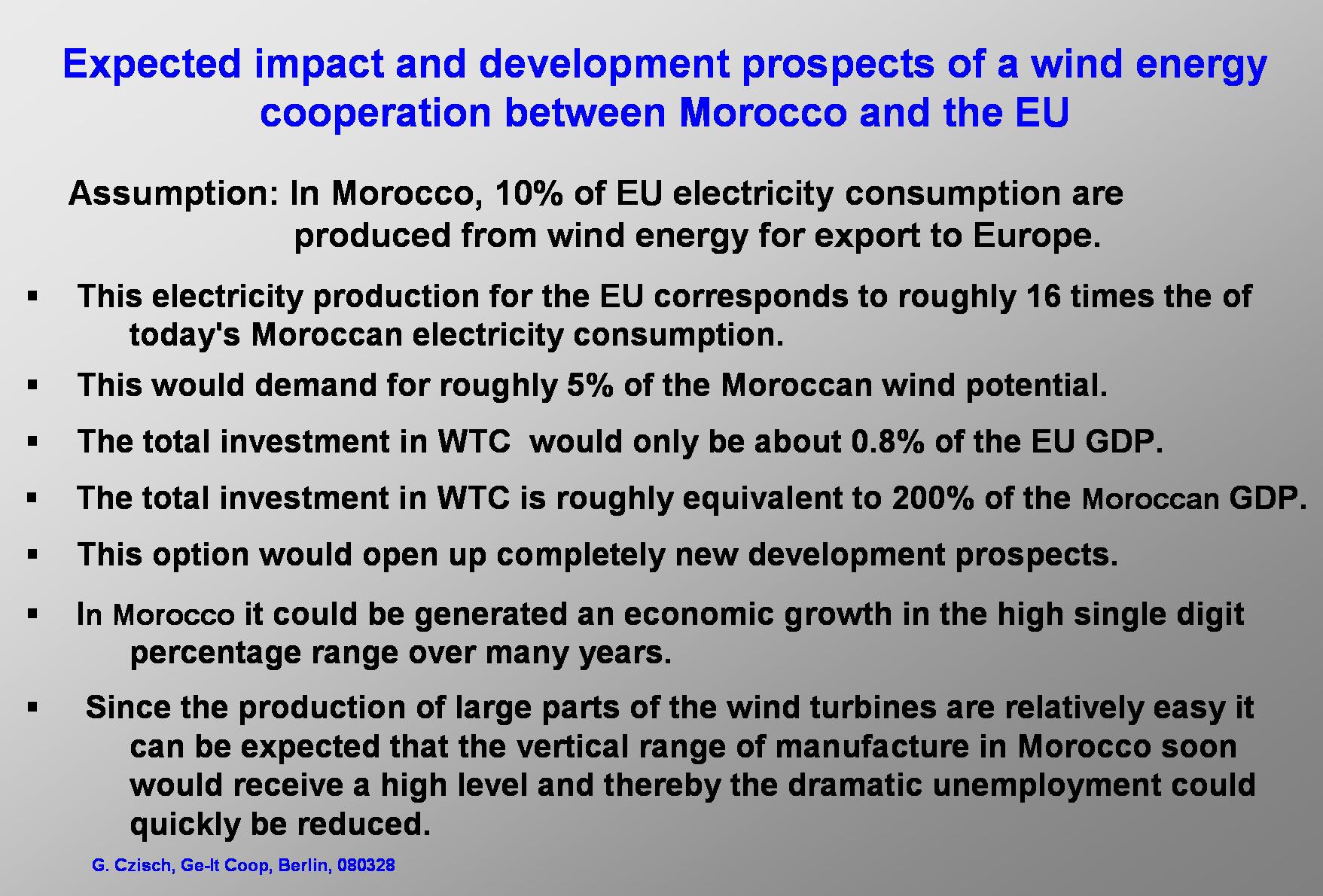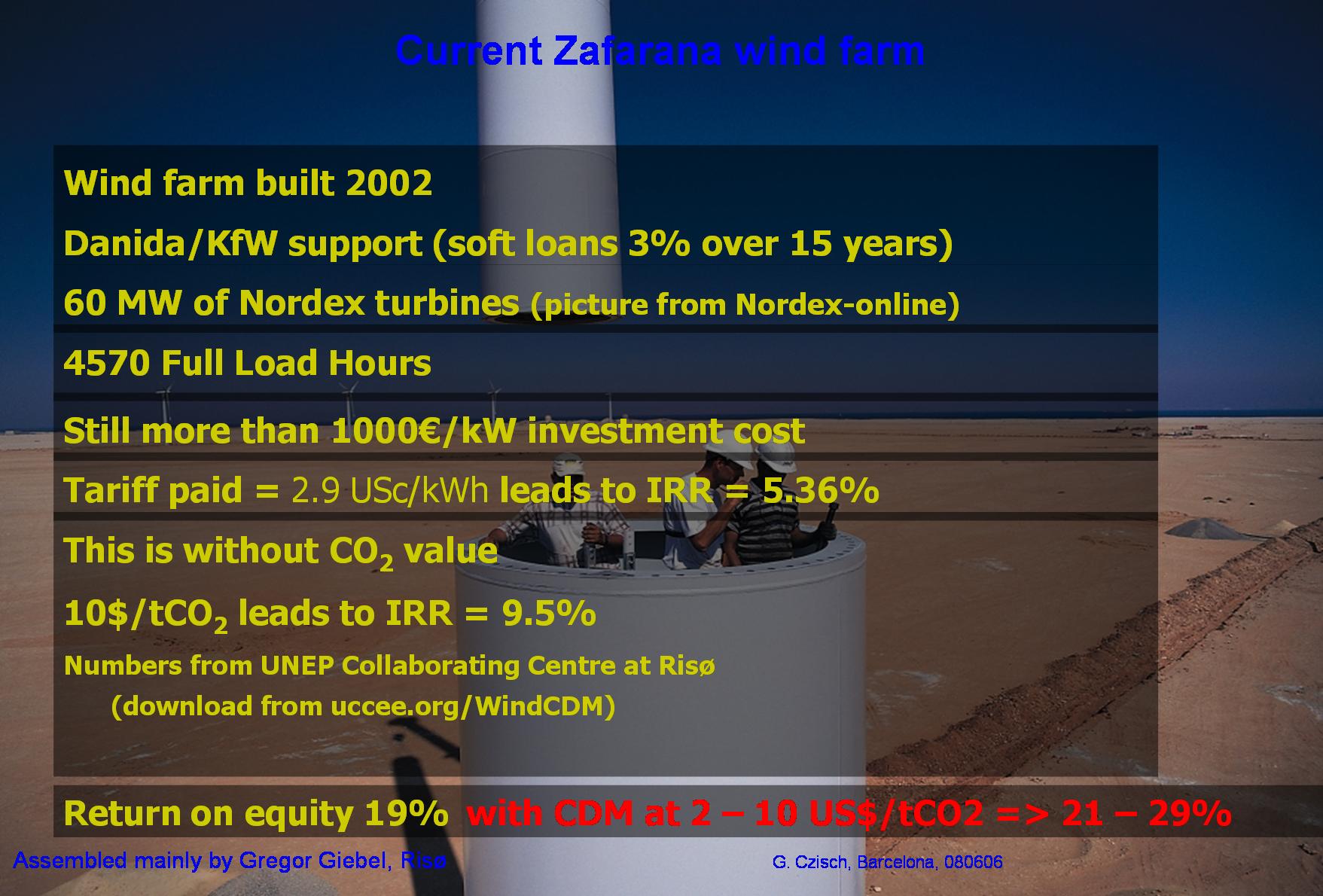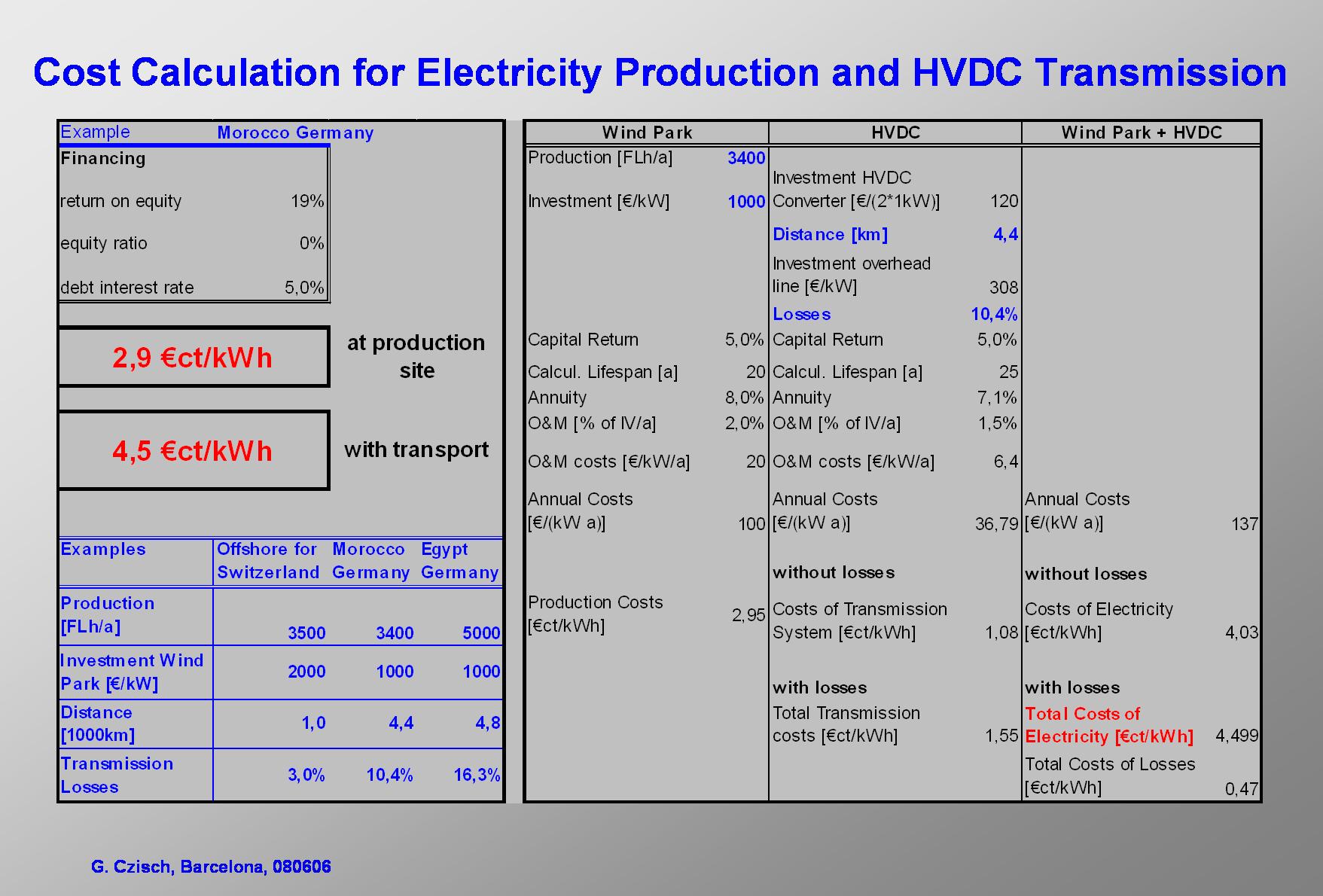Lecture Barcelona 2008 - Slide 27
Aus Transnational-Renewables
| Lecture Magdeburg [2001,en], Vortrag Lübeck [2006,de], Lecture Barcelona [2008,en], Vortrag EWEA 2000 [2000,en] |
| Vorstellung regenerativer Energien: Biomasse, Windenergie, Fallwindkraftwerke, Geothermie, Wasserkraft, Solarenergie |
| Overview | 
|
It is worth to consider the possibilities of designing the financing of renewable electricity production.
Since the biggest part of the costs of renewable electricity production very often is directly coupled with the investment the design of the financing has a very high influence on the resulting cost of electricity. I would like to highlight this influence by calculating some examples with this EXCEL sheet.
I would like to start with an example where wind energy is used to produce electricity in Morocco and the costs of electricity are calculated at the site of production in Morocco as well as after transmission over a HVDC line to Germany – for different financing approaches.
According to the low resolution data of the ECMWF it is conservative to calculate with an average production of 3400 FLH at the coast of Southern Morocco. The potential production of electricity at sites of this quality is very huge many better sites are available.
For the costs of electricity the height of capital returns on the entire capital is crucial. It is highly influenced by the relation between debt and equity capital.
One extreme would be that the entire capital is equity capital of an investor who claims for high returns on investment. Then the highest costs must be expected. If under these conditions for example the expected return on equity is 20% annually – a value which is quite common in the energy industry – the costs of electricity at the production site is 6.6 €ct/kWh. After transmitting the electricity to Germany the costs would be 10.4 €ct/kWh.
An other extreme would be if the investment was financed from taxes and only the payback of the investment was requested over the live time of the wind turbines. Now the costs of electricity at the production site are 2.1 €ct/kWh. This is less then a third of the costs calculated for the previous example. After transmitting the electricity to Germany the costs would be 3.1 €ct/kWh. The cost relation between the high and the low extreme now is a factor of 3.4.
All values in between these two extremes can be reached e.g. engaging – soft – loans with different interest rates and different equity shares. If for example a soft loan is available at a interest rate of 2.5% (Soft loans with comparable interest rates are quite common. For example in Germany such soft loans are given as part of energy saving programs.) and a equity share of only 10% of the total investment would be realised - at a return on equity of 20% - the costs of electricity at the production site would be 2.8 €ct/kWh. This is only about one third more than the cost of electricity calculated for the cheapest example. After transmitting the electricity to Germany the costs would be 4.3 €ct/kWh. The cost relation between this example and the low cost extreme now is a factor of 1.5. On the other hand the costs are only roughly 43% of the costs derived for the high cost extreme.
This means that it should be a political aim to finance the electricity production from renewable energies by appropriate soft loans. This would lead to socially favourable electricity costs. Here, for example, the World Bank or state owned development banks as well as private financial institutions are called to care for adequate financial instruments.
According to the Wind Resource Map of Morocco there are other good wind sites further north where also 3400 FLH could be expected. The transmission distance to Germany now would be about 1000 km shorter. But the cost difference in the case of the example with soft loans would be relatively small. The cost of electricity in Germany would be 4 €ct/kWh. So the electricity would only be 7% cheaper and the absolute difference would only be 0.3 €ct/kWh.
One can state that the design of the financing is much more important than minor changes in the total investment and therefore e.g. in the prices of wind turbines.


